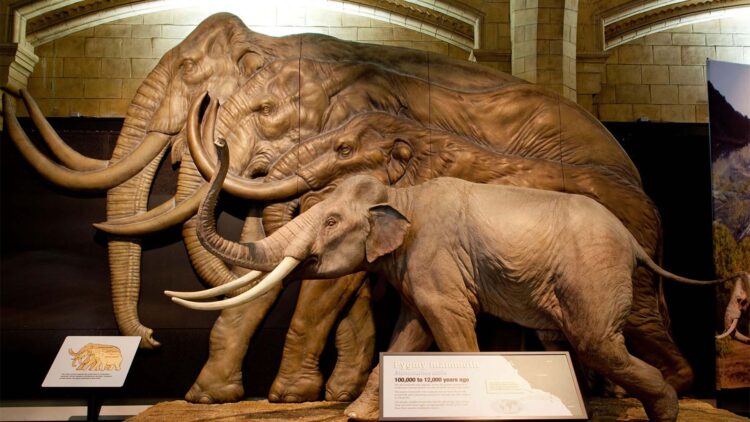Marianne Dehasque and her team did analysis of ancient DNA (fossil DNA) from two mammoths’ molars that were found in British Columbia, and the results, published on Biology Letters, rewrtitens the sooty of Mammoth in North America. It turns out that there was hybridization between the woolly mammoth and Columbian mammoth during the Late Pleistocene.
The work shows that both species not only coexisten, they also mixed over and over again, this of course brought real consequences, for evolution under climate change. The teeth, come from the Lake Okanagan and the Lake Babine, and although at first sight they looked like classic woolly mammoth teeth, the study showed the story was a bit more complicated than that.
The planet warmed and cooled and with it borders shifted, and species mixed.
Two teeth, thousands of years of mixing
The two molars found are around 25,000 and 36,000 years old. And they shape made them look like tooth that would be good for chewing stiff and cold grasses, but the genomes, however, contradicted this.
According to the report, “scientists found something surprising when they sequenced the DNA extracted from these remains.” Both teeth showed that they were ancestors to the Columbian mammoth. The older tooth had about 22% of the Columbian mammoth genes, while the younger tooth had about 35%. In other words, these crossings weren’t isolated occurrences.
During the Late Pleistocene, hybridization happen slowly over thousands of years. And the paper claims that “these hybrid mammoths showed greater genetic diversity than their Siberian relatives,” which would have allowed them to adjust to the swift changes in their environment. With more genetic tools, chances are better when plants, ice sheets, and weather continue to change.
When species don’t follow our borders
This finding is similar to an older research on Krestovka, which was a 1.2-million-year-old bloodline that contributed to the appearance of the Columbian mammoth, and that was conducted in 2021. Even then, scientists saw that mammoth evolution wasn’t a neat family tree. The new data confirm the pattern continued: “For thousands of years, there was a back-and-forth genetic exchange between species.”
But there’s a twist, too. The nuclear DNA shows two-way gene flow, but most mixing seems to have been males from the Columbian mammoth with females from the woolly mammoth. We know this because the mitochondrial DNA (passed down by mothers) in the hybrids is always woolly.
The hybrid teeth still “looked” woolly. Which suggests natural selection kept the tooth traits that worked best in cold, grassy places, even while the genes underneath were mixed.
Farther south, some hybrids probably kept more generalist teeth, like the Columbian mammoth, better for varied diets. As the authors remind us, “Often, nature does not fit our definitions.” Species meet, they sometimes mate, and then their descendants can thrive.
Why this matters now
This isn’t just a fun fact about ancient giant animals. It’s a clue for today.
When climate change habitats, animals overlap in new ways. And this mixing can bring risks, but it can also create helpful variation. We’ve seen similar stories in polar and brown bears, lions, and even modern humans with Neanderthals.
The study closes saying that mammoth history wasn’t a straight line; it was “a millennia-long dance between species, driven by climate and the need to survive.” This helps explain why those two teeth carry so much information.
This research shows that woolly mammoth and Columbian mammoth didn’t just live side by side; they mixed for thousands of years, and that mixing likely helped them adapt to the environment that has changing with time. The humble and hopeful message is that nature is flexible. As ranges move, genes move too. And sometimes, the best way to survive a changing world is to share.

